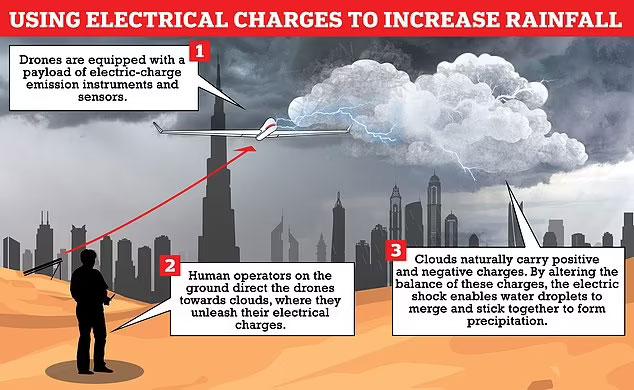The new method of cloud seeding shows promise in helping to mitigate drought conditions worldwide, without as many environmental concerns as previous methods involving salt flares.
Annually, the United Arab Emirates receives about 4 inches of rain per year. The government is hoping that regularly zapping clouds to generate rain will help to alleviate some of the arid nation’s annual heat waves.

According to research from the University of Reading in the U.K., scientists created the storms using drones, which hit clouds with electricity, creating large raindrops. The larger raindrops are essential in the hot country, where smaller droplets often evaporate before ever hitting the ground.

“It’s moving to think that the rainfall technology I saw today, which is still being developed, may someday support countries in water-scarce environments like the UAE,” Mansoor Abulhoul, Ambassador of the United Arab Emirates to the U.K., said during a visit to the University of Reading in May, where he was shown demonstrations of the new technology.

“Of course, our ability to manipulate weather is puny compared to the forces of nature,” vice-chancellor Robert Van de Noort said during the visit. “We are mindful that we as a University have a big role to play, by working with global partners to understand and help prevent the worst effects of climate change.”
According to CBS News














